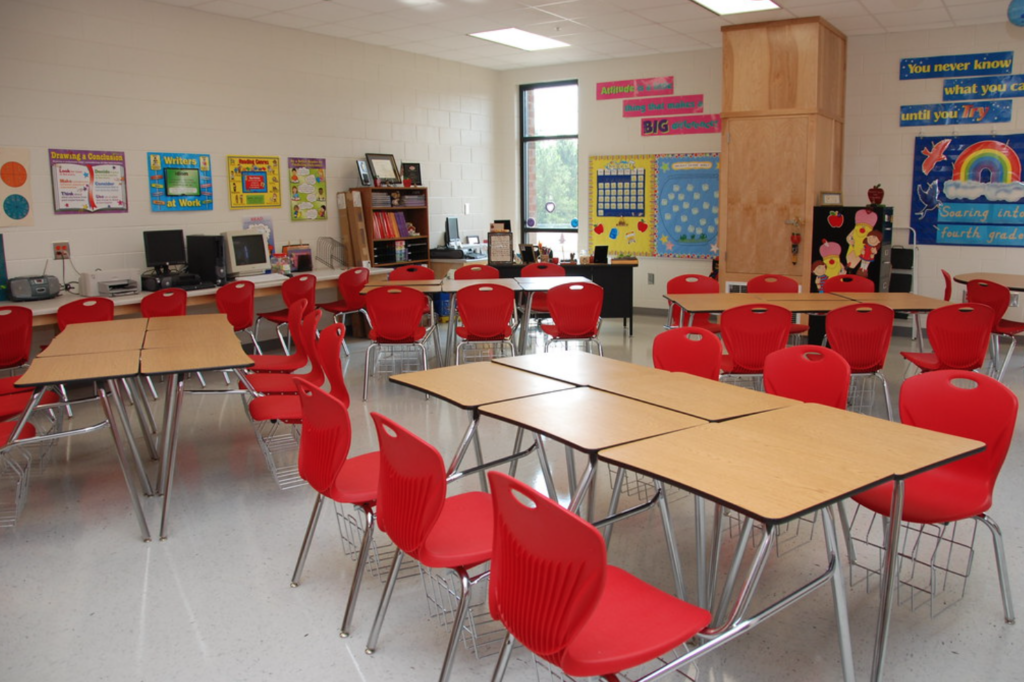
Creative Commons/BES Photos
It’s a dreary Monday evening, and you stare blankly at an array of foreign words and symbols. Slumped against the wooden chair of your kitchen table, your face grows hot with frustration. Hours go by, and tears spill down your cheeks as the words on the page taunt you with their complexity.
Native English speakers like myself are no stranger to the feelings of discouragement that accompany a challenging homework assignment. However, for English language learners across the nation, this is a daily battle.
“School is always hard. I don’t understand words for homework,” reflected a 9-year old ESL student from Afghanistan who is enrolled in an English as a second language (ESL) course at her school in Atlanta. “My teacher says to finish it. I need to guess.”
Language barriers not only contribute to a lack of self-esteem among non-English-speaking students, but they also result in consistent academic disengagement and frustration. ESL students perform poorly on statewide exams, with only 5% of non-native English speakers in New York scoring within proficient standards on the statewide English exam and 13% scoring proficient in math. This trend of academic adversity is not exclusive to New York; it’s a nationwide concern. Just 63% of ESL students graduate from high school and only 1.4% of these students take college entrance exams. Our English language learners are lagging far behind their native English-speaking peers, and their disproportionate loss in learning and academic progress demands our immediate attention.
While a linguistic divide undeniably contributes to poor academic development, the nation’s inherently flawed approach to ESL education is primarily responsible for the educational crisis that exists among English language learners. Many school systems deliver substandard education and emotional support to English language learners. Emotional support in classrooms is fostered by creating inclusive learning environments that implement culturally sensitive teaching methods. This includes encouraging students to embrace and share their native language and cultural backgrounds. Educational environments that lack such facets of support prompt academic and social disengagement among students.
The failure to provide effective instruction for English language learners stems from a lack of teachers trained to provide ESL education. Non-native speakers have unique academic and social needs, including addressing academic disengagement and social isolation, that teachers must account for in their lessons. While 41% of public school teachers have taught ESL students, less than a third of those teachers have received bilingual or ESL certification. Therefore, such teachers are not prepared to support English language learners. The presence of trained ESL educators in a classroom is shown to increase test scores and academic achievement among ESL students. However, despite the proven benefits of training, only 24% of teaching programs in the country train elementary school teachers in ESL education.
Schools not only fail to prioritize proper ESL training, but they also lack culturally responsive learning environments. ESL teachers often practice “subtractive bilingualism,” in which ESL teachers reduce a student’s exposure to their native language in an attempt to facilitate English language acquisition. A student’s native language is viewed as a liability, and ESL students are berated with English in an attempt to cleanse them of their native tongue. This approach disturbingly mirrors historical ethnic cleansing tactics, in which members of minority ethnic groups were forcibly removed from a region in order to advance the dominant culture. While the consequences of both practices differ in magnitude, subtractive bilingualism enforces the notion that one language or culture is superior to another. Furthermore, in actively suppressing students from speaking in their native tongue, schools fail to provide ESL students with the emotional support they desperately need. Erasing an integral part of a student’s character hinders identity development and leads to cultural disconnection. Students exposed to subtractive bilingualism may feel isolated and marginalized, and the creation of such an unwelcoming learning environment also discourages academic development. As a result, a monolinguistic approach to bilingual education is ineffective and detrimental to students’ social and academic progress.
Instead of discouraging students’ use of their native language, schools should embrace and celebrate bilingualism, recognizing that a child’s first language can be a valuable asset to their education. Students in bilingual programs that encourage dual language development have been found to outperform their peers on academic assessments. These students have the ability to make cross-cultural and cross-linguistic connections between languages, thereby improving their literacy skills. Furthermore, bilingual education programs empower ESL students and allow them to feel welcomed and represented by their schools. These students receive the encouragement and recognition they need to excel academically.
However, the implementation of dual language programs depends heavily on the number of qualified bilingual teachers. If we continue to neglect our nation’s dire need for more qualified ESL educators, we will be unable to effectively incorporate dual language practices into ESL classrooms. Economic challenges and budgetary constraints often sideline specialized ESL training. Furthermore, educators may be interested in undergoing ESL training but lack accessible and affordable developmental opportunities in their area. In order to address these challenges, we must advocate for state and federal reforms that incorporate ESL training as part of the standard teacher certification process. By doing so, we can ensure that ESL training is a vital and non-negotiable component of teacher development, preventing it from being overlooked due to financial constraints. School districts must also make it a priority to secure the adequate funds and resources necessary to support their ESL educators. In prioritizing ESL training, we lay the groundwork for a more inclusive and enriched learning environment for our non-native English speakers.
As the number of ESL students across the nation continues to rise, it is crucial that we begin to take the steps necessary to reconstruct our approach to bilingual education. Despite demonstrating exceptional academic promise, our non-native speakers have fallen victim to an inherently flawed and broken education system. They have been neglected, deprived of their fundamental right to quality education and ostracized from speaking their native tongue. It’s about time we begin to train our ESL educators, restructure our classroom environments and provide our English language learners with the robust educational experience they deserve.
Trisha Minocha (24C) is from Long Island, N.Y.
Trisha Minocha (she/her, 24C) is from Long Island, New York, majoring in biology with a minor in ethics. Outside of the Wheel, Trisha enjoys reading, listening to music, and going on runs.



